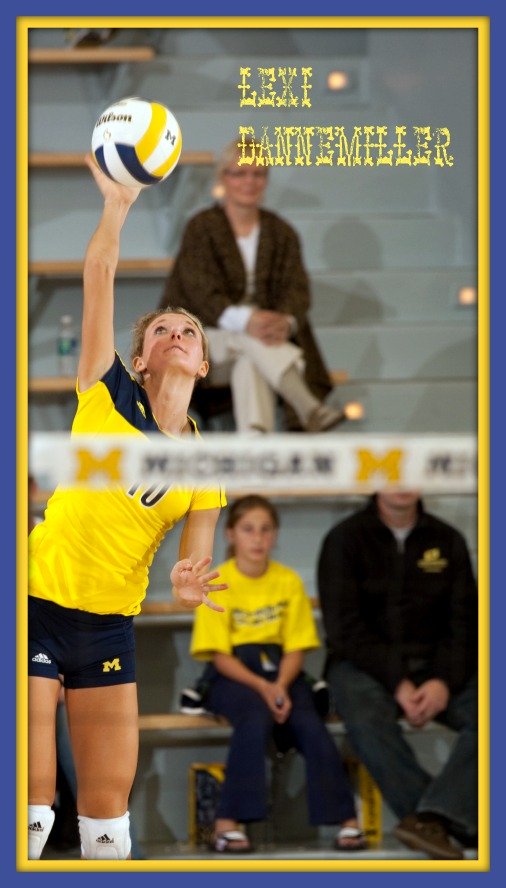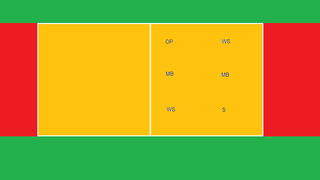8 Volleyball Serve Rules on The Toss and When and Where You Can Serve
Learn the rules of serving along with the most common fouls and service faults committed in competition.
According to the volleyball serve rules each rally begins with the serve.
This makes the serve the first opportunity for a player to score a point.
Serve A Volleyball Overhand Learn Three Serves Vegas High School Players Know How To Do
Volleyball Serve Rules About The Toss
No matter your serving style, the toss is a fundamental part of the serve in volleyball.
You can't serve a ball without tossing it up in some way, shape or form.
- With that being the case, the volleyball serve rules state that when you serve, only one toss is allowed once the referee has blown their whistle.
Once a player tosses the ball up for their serve, if they catch the ball without completing their service action, that is a fault and the referee will blow their whistle and award the opposing team the ball.
The serve doesn't always go as planned.
Check out this compilation of funny volleyball serve moments during top women's matches.
See you aren't the only one who serves the ball in the back of your teammates head.
If you are a server and you realize you've given yourself a bad toss, according to volleyball serve rules you can let the tossed ball drop.
Once the ball drops, you can catch the ball.
After its been dropped, the referee will blow their whistle indicating that the complete service action will begin again and will give you, the server a second opportunity to serve within 5 seconds time .
- Not only does the server need to let the ball drop in order to reset their five seconds to serve again, but the ball needs to drop to the floor without touching any of the server's body parts on the way down.
Many times a server will toss a ball up to serve it and then can't get out of the way fast enough before the tossed ball hits them on the way down.
If this happens, then the referee will blow their whistle and award the ball to the opposing team.
Don't you hate when that happens?
Volleyball Serve Rules:
Can A Player Serve From Anywhere on the Court?
- The service action has to take place within the service zone of each team's court.
The service zone is parallel to the endlines and centerlines of the court and is located behind the end line on each team's court.
- The endline is also referred to as the "service line" when the team on defense is serving. The service line is the line a player cannot touch or step over while in the act of serving the ball over the net.
(See the area in red in the diagram.)
- If the player touches the line while serving this is considered a fault, and the referee will blow their whistle and then award the opposing team the ball if such an action occurs.
- The server can serve the ball from anywhere behind the service line within that 29 foot 6 inch area marked as the service zone.
Volleyball Serve Rules
When Can A Player
Serve The Ball?
Once a player is ready to serve, they are standing in their team's service zone and they must wait for the referee to blow the whistle before beginning any service playing action.
The server has 8 seconds from when the referee blows the whistle to complete their service action, whether they choose to use an under hand serve, overhand serve or jump serve and to get the ball over the net and into the opposing court to start the rally.
They must start their pre-serve routine and contact the ball behind their service line within that red zone and cannot enter the court until after they've contacted the ball.
More Volleyball Serve Rules
What team gets to serve first? And how are they chosen?
- At a certain time before the start of a match, usually 10 - 15 minutes before the start, the head official called "the head referee" will whistle for the team captains from each team to meet at the net. They will shake hands and introduce themselves. The official is responsible for setting the ground rules for the match. This will include explaining to both captains the playing areas of the court, overhead obstructions and court surroundings.
Once finished the referee will produce a coin and ask one of the team captains "who wants to choose?" and then will ask "what do they want "heads" or "tails"?.
The team captain who wins the toss will choose either "side" or "serve".
If they pick "serve" then they will be "awarded" the opportunity to serve first during the first set of the match.
For the subsequent sets, teams will alternate who serves first. So if Team A won the coin toss and served first the first set, then Team B will automatically begin the second set with the serve.
- If a server does not hear the whistle and serves the ball they will have to re-serve the ball. The service cannot start a rally without the referee first blowing their whistle to indicate the service can begin.
WATCH! Jorge Filho's video
"Top 13 Best Powerful Serves in Women's Volleyball"
Volleyball Serve Rules:
Where Do You Go From Here?
Where do you need to go now?
Your three options are:
- You can learn more about the Rules of Volleyball by visiting the related links below.
- Follow the suggested reading on our Sitemap page Learning How To Play (Sitemap)
- Or visit the pages in the How to Play Volleyball section in the drop down menu at the top of the page to get started.
- Improve Your Volleyball ›
- Important Rules of Volleyball All Varsity Players Should Know ›
- Volleyball Game Rules: For Scoring, Skills, Rotation and Regulations
- 8 Volleyball Serve Rules On The Toss and When and Where You Can Serve
- GoSports Splash Tower Water Dunk Game

- Price: $179.99
- GoSports Splash Net PRO Pool Volleyball Net - Blue

- Price: $119.99
- GoSports Splash Net PRO Pool Volleyball Net - Red

- Price: $119.99
- GoSports Pro Neoprene Pool Volleyball - 2-Pack

- Price: $29.99
- GoSports Lacrosse Floating Pool Goal Set

- Price: $49.99
- GoSports Swimming Pool Basketballs - 3-Pack - Blue

- Price: $19.99
- GoSports 12" XL Inflatable Volleyball - 3-Pack

- Price: $14.99
What Are You Looking For?



Hi there!
Thanks for stopping by. Hope you learned something today that will help you reach your volleyball goals.
Be sure to subscribe to my email newsletter so you can learn more each week!
Stay strong! Stay motivated!
-Coach April
SUSCRIBE
to my email newsletter below!

Get Christmas volleyball shopping for your favorite beach/indoor player done early this year!
Click to Shop!
Recent Articles
-
Lang Ping Volleyball Trivia Quizzes Answers Questions For Players
Apr 23, 24 10:22 PM
How well can you answer these questions for volleyball players about the career and playing highlights of former Chinese Olympic pro player and coach Lang Ping? -
Hot Tips, Strategies And Responsibilities for Setters In Volleyball
Apr 08, 24 11:59 PM
Setting Success Unlocked: Essential training tips for setters in volleyball who need to know how to quickly and successfully improve their setting technique -
Volleyball Setter Training: Techniques to Improve Your Setting Skills
Apr 08, 24 11:39 PM
This volleyball setter training reviews step-by-step each body part and what it does so you learn how to correct your mistakes and improve your setting skills.















New! Comments
Have your say about what you just read! Leave me a comment in the box below.